We may receive a commission when you use our affiliate links. However, this does not impact our recommendations.
Before we launch into part 2 of this series, allow me to ask a question. Do you enjoy looking for a tool that you cannot find, but you saw just a couple days ago and you have looked for everywhere?
If you answered “yes,” then you don’t need to read this article and can return to the eternal game of Where is My Tapered Bung-hole Reamer? For the rest of us, having our tools well-sorted means more time cutting wood and less time looking for something with which to cut wood.
Believe me when I say to you that this is not about having a knitted cozy for your trammel points. These are principles based on looking at a lot of historical tool-storage systems. It’s no more work to use these principles when you build a tool cabinet or chest.
OK, here we go:
3. Not too much, not too little (aka, overall volume). When your stomach is full, you (should) stop eating. Likewise, when your tool chest is full, you should stop buying every pretty bit of rosewood and brass that crosses your path.
If you are a tool collector or you just really like messing with tools, this doesn’t apply to you. If you are trying to build furniture, then consider this: Having two (or 10) smoothing planes means you have twice (or five times) as many edges to sharpen and soles to maintain.
As someone who has been down this path and back, I can say this: I get a lot more furniture built now that I have a lot fewer tools.
So what is the proper volume for a good kit of tools? That’s hard to say. I have 12 cubic feet of space, but a lot of that is wasted on the mechanisms that make it easy to use (see the section in part 1 on keeping all your tools under your eyeballs).
I think a smart person could design a wall cabinet or rack that uses much less volume but holds the same kit. So give it your best shot.
I think the proper way to design your cabinet or chest is to make a careful list of the complete set of tools you need to build furniture. If you are a woodworker who dabbles in different disciplines – I also build Welsh chairs, for example – you might consider making a separate chest for those tools. Or just incorporate them all into one big happy kit.
A common complaint I hear from beginners is: “I don’t know what tools I need because I don’t know what I’ll be interested in during the future.” Well there are lists of tools you need to build furniture that will take you back 300 years (at least). The kit is well-defined. And it’s not as big as you might think.
This is why I rely on the historical size and arrangement of a tool chest. I’ve been working out of a chest since 1997 and respect the millions of woodworkers who shaped its final size and features down the absolute minimum. It really is genius.
Wall cabinets and racks can also do the same things. I’m just not smart enough to make them so they trump a floor chest. I hope that you can.
4. Movable, or not. This is an either/or proposition. How you structure your tool storage means it is easy/difficult to move/steal.
Consider this: A traditional 24” x 24” x 38” tool chest is almost impossible for a single person to lift. Not just because of the weight but because you can’t get your arms around it – no matter how strong you are (woodworker Jerome Bias is excepted from this). So if someone wants to steal your tool chest, they have to have an accomplice or two. And someone will eventually squeal.
The downside to that big chest is if you have to move it by yourself, you need a series of ramps, pulleys and perhaps conveyor belts that you purchased from a defunct factory. Or a friend or strong spouse.
If your chest is more like 26” long, then you can wrap your arms around it and move it by yourself, even if that means moving it to a pickup truck or wheeled dolly.
Another thing to keep in mind: locks on small chests like this are kind of silly. If they can pick up all your tools and walk away, do you think a thief is going to pick the lock to get one tool out?
Wall cabinets have similar constraints. Some can be moved by one person. Some can’t. If you are going to die in the place you now live, then build your cabinet or chest as massive and unwieldy as you like. It will be a problem for your heirs.
5. Durable and appropriate construction. It’s easy to over-build your tool storage. And I don’t think there’s anything wrong with over-building if it suits your skill set. For me, cutting dovetails is easier than figuring out a smarter way to do things. I can be halfway through the carcase by the time I figured out a way to build the thing without dovetails.
That said, tool racks and wall cabinets don’t need the sort of heavy-duty joinery that a movable piece does. Because you can rely on the walls and the studs of your shop, you can use simpler and easier joinery for a wall cabinet. If the thing isn’t going to be pushed or pulled around, then you can get away with screws or something else and be fine for a very long time.
So think about the forces that will work on your cabinet, chest or rack. Movable chests need to be able to fall off a moving truck. Wall cabinets don’t.
Next up: Arranging your tools.
— Christopher Schwarz
Here are some supplies and tools we find essential in our everyday work around the shop. We may receive a commission from sales referred by our links; however, we have carefully selected these products for their usefulness and quality.



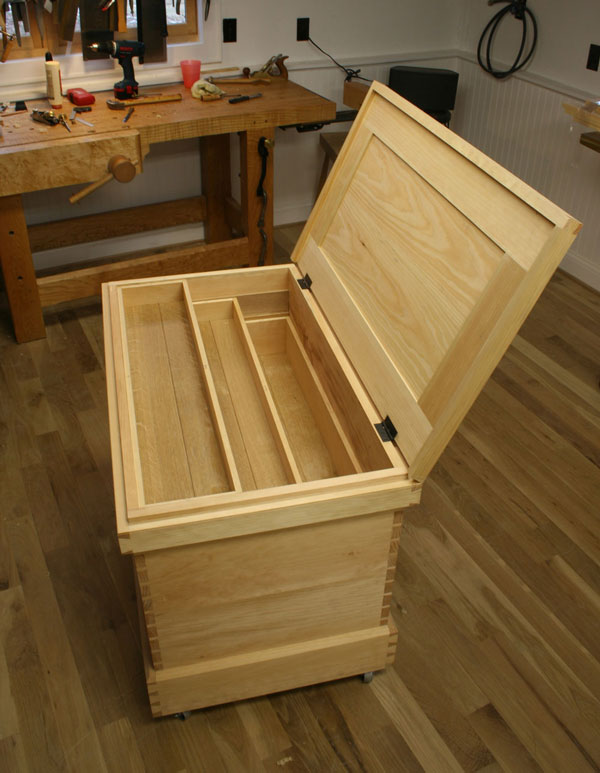
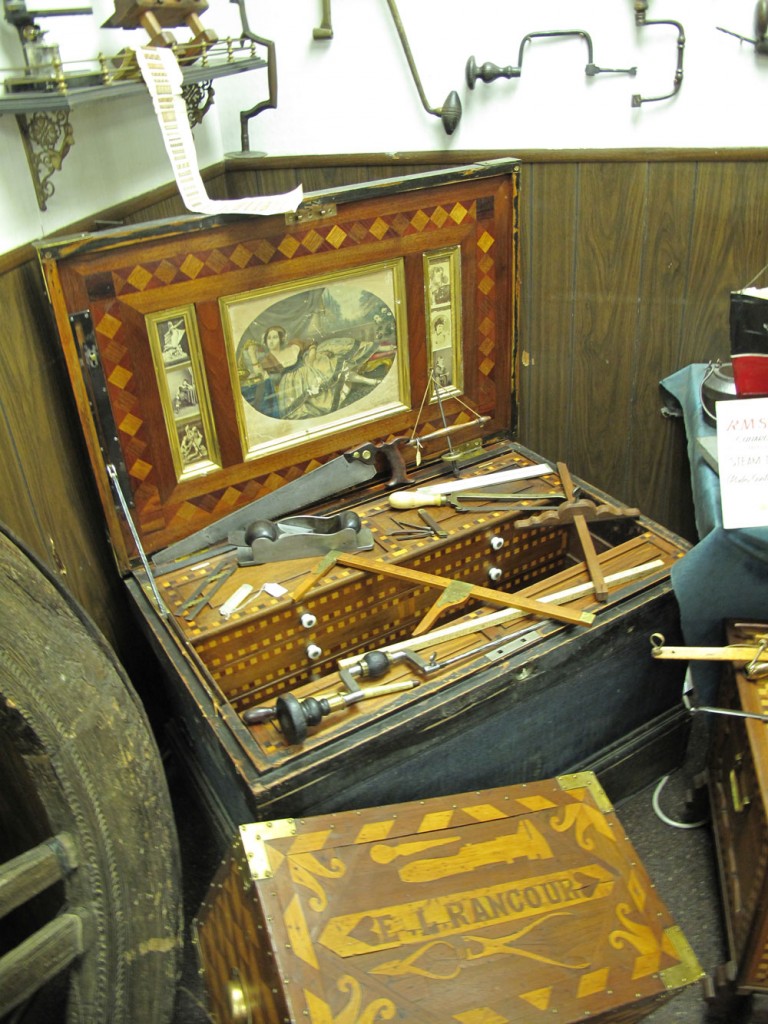
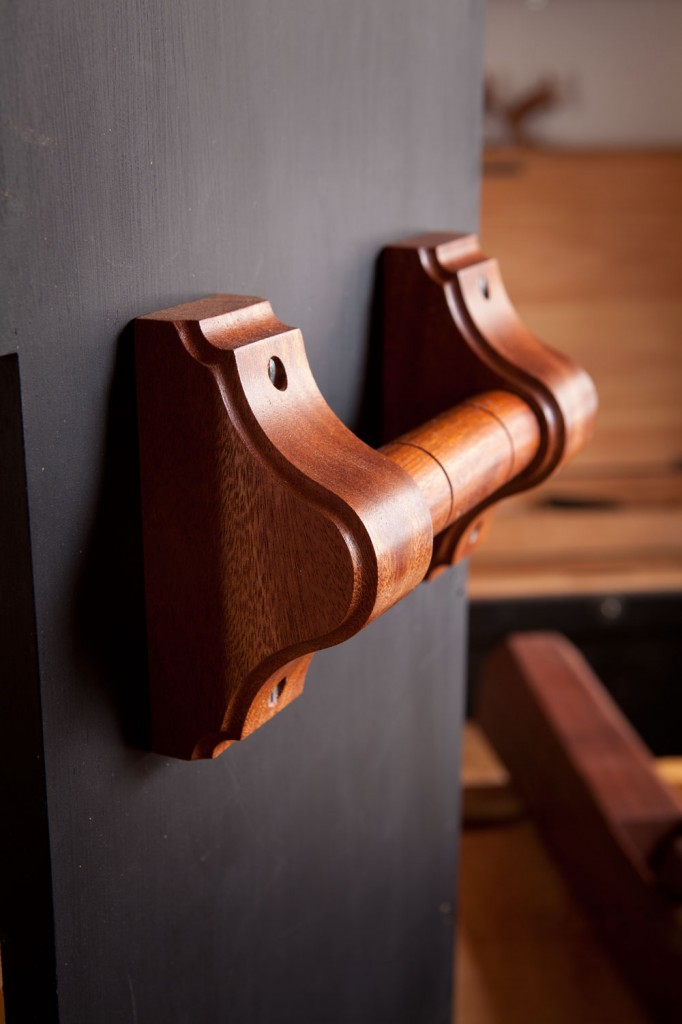
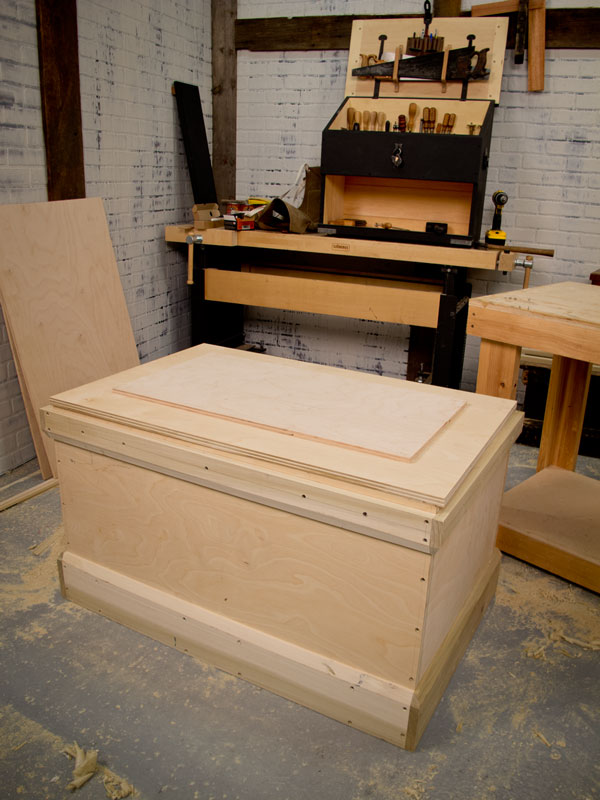




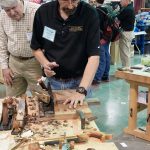

So Chris, are you saying I should sell my trammel point cozies? What should I sell them for? My grandmother knitted them for me with Alpaca yarn.
Hi Chris, I very much like your piece on work chests and wall cabinets. I am fascinated by Mr Studleys masterpiece and made my own wall cabinet. My thought process was to have the tools set out so that they were available to hand to coincide with the progress of the job, so the tools on the front line are marking tools, planes behind etc. Tools that I don’t use regularly are on the back of the cabinet. If I had a chest, I would break my already broken back bending down every time I need a new tool, and I can imagine that it would always be in the wrong place in the workshop,and a bugger to move!
I have some photos but I don’t know how to post them.
Cheers,
Keir
Loved the series. I can attest to the protection aspects, and I hope I can get my collection under control and still save space.
Just one note on the second part: the section numbering is off by one. Part 1 was 1-3. This section should be 4-6. (You can blame my father for my pickiness about this like this.)
Great series of articles. Keep them coming.
I’m not worried about anyone stealing from my chest, but a lock is essential to me to keep the sharp stuff away from my young son.
One of the things people forget about when talking about locks is second or third shifts. If you are not around, then tools develop legs and walk off. Yes, I know second shifts are a result of artificial lighting, but that has been around now for well over a century.
Also, there was the “journey” in journeyman – One needed to protect one’s tools during transit. Your tools were your life. You had several months worth of salary in your box.
You may not move often, but you did move.
I was trained as a patternmaker. The first thing one did with a new tool was put your name on it. The box had a lock, because the shop was still open when your shift was over. The box had wheels because, a) moving shops was the usual way to a pay increase, and b) the saying went: You get six weeks off every year, you just didn’t know which six. (i.e. you got laid off regularly when the shop was low on work)
“Or a friend or strong spouse.”
Or as we who grew up on farms in the mid-west say “Big enough to help you, but not so big she scares you.”
I suspect that tool chest users worked in communal workshops. Hence locks discouraged casual borrowing by fellow workers. They might just be to keep the wife away from……well now thats an interesting question.
I spent a great deal of time building a wall cabinet based on a FWW article and
am really quite proud of the finished product but it’s hung on the wall in one location in my shop. If I’m working at the other end of the shop I’m constantly walking back and forth. I’m thinking it would be a better use of my time to roll a chest to where I’m working. It would also result in tools getting put back where they belong instead of being left out because it’s easier than walking back to put them away.